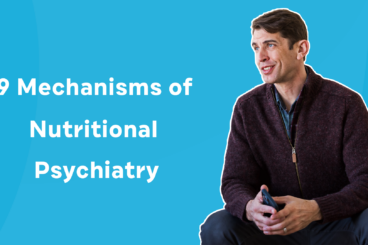Eating healthy, real food costs more, right?
Not so fast. In fact, this is a huge myth. Participants in the SMILES study, a recent study examining the connection between food and mood, saved $140 Australian dollars a month while eating a brain-healthy diet. Still, it is one of the most common questions I get. How can I eat for brain health on a budget? Here are some ideas for you to grow your brain without shrinking your wallet.
Our Favorite Brain Food on a Budget Hacks:
#1 Seafood – Wild! Small! Frozen!
Americans only eat about 14 lbs of seafood per year despite how great it is for brain health. At stores such as Costco and Walmart you can find them between $2 and $3 per can. And they are even less expensive if you buy them in bulk. Another trick is buying canned wild salmon – awesome for salmon salad or salmon burgers. Another top recommendation is the bivalves: mussels, clams, and oysters. Get them fresh or canned.
Finally, buy frozen fish. Because… almost all fish is frozen when it is caught anyway. Frozen is great as it takes away the pressure of having to cook fish right away.
Remember the rules of fish – go wild, go small, buy frozen.
#2 Legumes
Legumes are incredibly filling, delicious, nutrient dense, and rich in fiber that supports the “good bugs” in our gut. The best value is buying dried beans and lentils in bulk. Make into soups, salads, stews or burgers. One of my favorites is my lentil shepherd pie in Eat Complete.
Beans are all delicious and nutritious, and you can eat the entire rainbow with beans alone. At Walmart, 32 oz of great northern beans is just over $3.00. 32 ounces is 26 servings! Canned beans may take less time, but the price difference is huge, and once you get the hang of it, cooking beans from scratch doesn’t feel so intimidating.
#3 Frozen Veggies
A lot of people think they should shy away from frozen fruits and veggies, but the truth is that a lot of frozen produce has more nutrients than what we find on our shelves. Sure, frozen veggies won’t work well in a salad, but they’re great in soups, stews, stir-frys and other meals.
Should they be organic? Sure, organic veggies are more costly. That’s why we recommend eating in season, maxing out the value at your Farmer’s Market, and knowing which veggies are most important to buy organic (like leafy greens). I use The Environmental Working Group’s list of the “dirty dozen” to know which vegetables and fruits are most laden with pesticides and where to focus on organic.
#4 Shop in bulk
Buying in bulk is always less expensive. If you can fit it into your budget, it’s a great way to save and prepare for the month ahead.
Grains like oatmeal and brown rice, which are affordable and brain healthy staples, are easy to buy in bulk. You can also experiment with other whole grains like millet, buckwheat, and amaranth. Legumes like beans and lentils are also often available in bulk bins with even better prices than listed above.
You can also buy spices from bulk bins. The price per ounce may not vary tremendously, but you can buy whatever quantity you like.
In some areas, it’s also possible to buy meat in bulk. You can even purchase a meat share directly from a farmer.
#5 Eat in season
Eating in season is beneficial for a number of reasons; it ensures diversity in your diet, the nutrient content of freshly picked produce can’t be beat, you get to know folks in your community and the people who grow your food, you support the local economy and often small businesses, and you can save money.
Farmers markets often partner with city agencies to offer incentives to buy. In NYC, many organizations give out “health bucks”, which are $2 coupons that can be used to buy produce at the farmers market. You can also use food stamps at many Farmers’ Markets.
And, if these aren’t enough reasons to shop at the market, you can also get great deals, especially at the end of the day.
These are simple ways to get the most nutrient bang for your buck. With some planning and attention, you can take your food dollars a long way.
Check out this download I created- Brain Food on a Budget. It elaborates on these five tips, includes budget friendly recipes, and shopping lists (including prices)! I hope it’s as helpful for you as it’s been for me.



